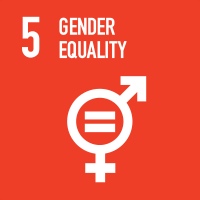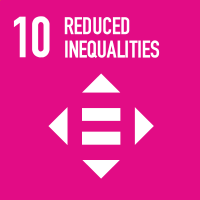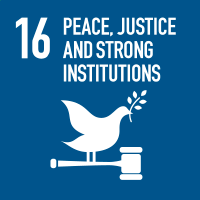Studying at the University of Verona
Here you can find information on the organisational aspects of the Programme, lecture timetables, learning activities and useful contact details for your time at the University, from enrolment to graduation.
Study Plan
This information is intended exclusively for students already enrolled in this course.If you are a new student interested in enrolling, you can find information about the course of study on the course page:
Laurea magistrale in Storia delle Arti - Enrollment from 2025/2026The Study Plan includes all modules, teaching and learning activities that each student will need to undertake during their time at the University.
Please select your Study Plan based on your enrollment year.
1° Year
| Modules | Credits | TAF | SSD |
|---|
1 module among the following1 module among the following2° Year activated in the A.Y. 2024/2025
| Modules | Credits | TAF | SSD |
|---|
4 modules among the following| Modules | Credits | TAF | SSD |
|---|
1 module among the following1 module among the following| Modules | Credits | TAF | SSD |
|---|
4 modules among the following| Modules | Credits | TAF | SSD |
|---|
Legend | Type of training activity (TTA)
TAF (Type of Educational Activity) All courses and activities are classified into different types of educational activities, indicated by a letter.
Anthropology of Cultural Heritage (2024/2025)
Teaching code
4S010529
Teacher
Coordinator
Credits
6
Also offered in courses:
- Cultural Anthropology of the course Master’s degree in Historical Studies (interuniversity)
Language
Italian
Scientific Disciplinary Sector (SSD)
M-DEA/01 - DEMOLOGY, ETHNOLOGY AND ANTHROPOLOGY
Period
CuCi 2 A dal Feb 17, 2025 al Mar 29, 2025.
Courses Single
Authorized
Learning objectives
The approval of the UNESCO Convention on intangible cultural heritage (2003) has led to a broadening of the understanding of cultural heritage. The primary objective of the course is to bring an anthropological perspective to aspects of the material and intangible heritage of communities and their contexts. Through various teaching methods (lectures, discussions, meetings with experts), that favor the seminar-type approach, the course aims to bring students to a critical understanding of some of the themes and concepts of the discipline so as to approach with a relativistic gaze the different practices and productions of human societies and reflect on how historically the ‘others’ were built and narrated (first part) and how these representations have influenced – and continue to do so – the perception of their material and intangible heritage inside and outside museums (monographic part). Students are expected to actively participate in class discussions and to engage in a personal research project. At the end of the course the student is expected to: 1. have acquired knowledge of the categories and language used in anthropology to investigate patrimonial processes related to tangible and intangible assets; 2. be capable of making use of the acquired tools to critically approach such processes.
Prerequisites and basic notions
some knowledge of key concepts of cultural Anthropology
Program
The course is divided into two parts. Initially, some theoretical and methodological themes of the discipline will be addressed and then the status of ethnographic objects, outside and inside the museum institution, will be addressed. First part: belongings, borders, gaze, relativism and universalism, indigenous ontologies, fieldwork and its ethical implications. Second part: the social and cultural biography of objects. People-things relationships. The circularity of objects, the creation of social bonds. How ethnographic collections were formed in European museums. The change of gaze and posture. The decolonial practices underway in some European museum institutions. Whose memories and stories are on display in contemporary museums? What is the point of view through which they are told? How can the museum move in a cross-cultural perspective? The requests for restitution made by groups demanding the return home of objects stolen from their ancestors.
Course Readings.
First Part:
a) Allovio, Stefano, Ciabarri, Luca, Mangiameli, Gaetano, a cura, (2024) Antropologia culturale. I temi fondamentali. Raffaello Cortina Editore, Milano
Second Part:
b) Lattanzi, Vito (2021) Musei e antropologia. Storia, esperienze, prospettive. Carocci, Roma.
c) Kopytoff, Igor (1986) The cultural biography of things. Commodization as process. In Appadurai, Arjun (ed) The social life of things. Commodities in cultural perspective. Cambridge University Press, Cambridge.
Disponibile anche nella versione italiana 2005 [1986] La biografia culturale degli oggetti: la mercificazione come processo. In E. Mora (a cura) Gli attrezzi per vivere. Forme della produzione cultuale tra industria e vita quotidiana. Vita e Pensiero, Milano, pp. 77-111.
Bibliography
Didactic methods
Teaching methods:
a) lectures
b) discussions
c) meetings with experts
d) at least one field trip
In-presence attendance is strongly recommended.
Learning assessment procedures
Final oral exam.
For those attending classes: class participation, in-class presentation and final report.
For those NOT attending classes: Final oral exam. The student is asked questions about the course readings and about the central issues and thematic aspects addressed. The student should bring with her/him the texts which s/he has studied.
Evaluation criteria
For those attending classes: class participation, in-class presentation and final paper. More specific details will be given at the beginning of the course.
For those not attending classes: final oral exam on the whole program. The student is asked questions about the course readings and about the main thematic issues they addressed. The knowledge acquired will be verified and the competence achieved will be evaluated.
The oral exam - through some questions on the scheduled texts and on the thematic aspects covered in them - aims to verify:
- depth and breadth of the knowledge acquired;
-language skills;
-critical and argumentative ability
Erasmus and international students may take the final oral exam in English or French. If interested, they need to discuss the choice of (eventually) new reading materials with me during Office hours.
Criteria for the composition of the final grade
The final evaluation is based on 30/30.
For those attending classes and choosing to write the final paper: paper (max 26/30) + oral discussion (max 4/30). Otherwise oral exam (max 30/30).
Exam language
Italiana



